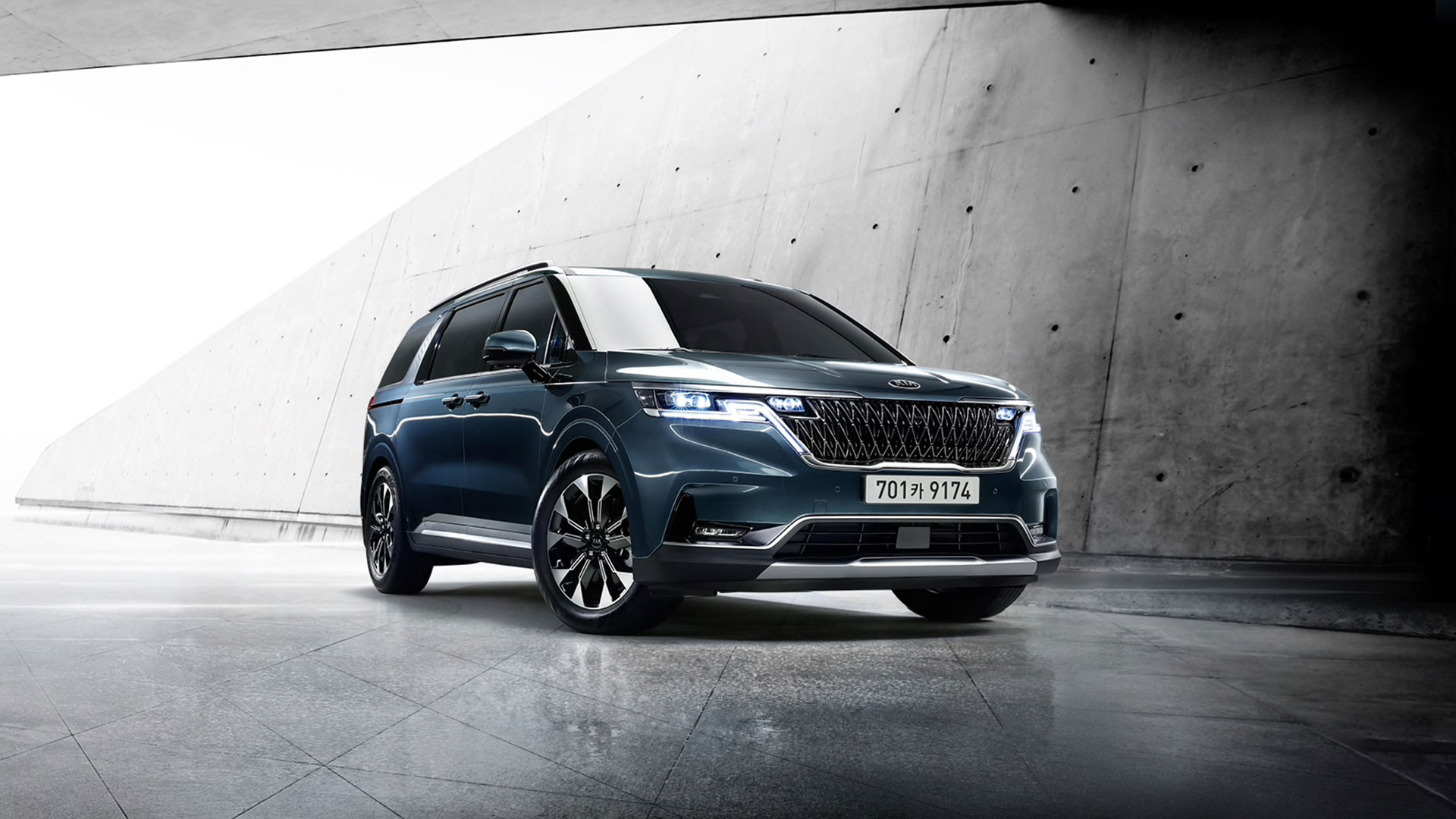
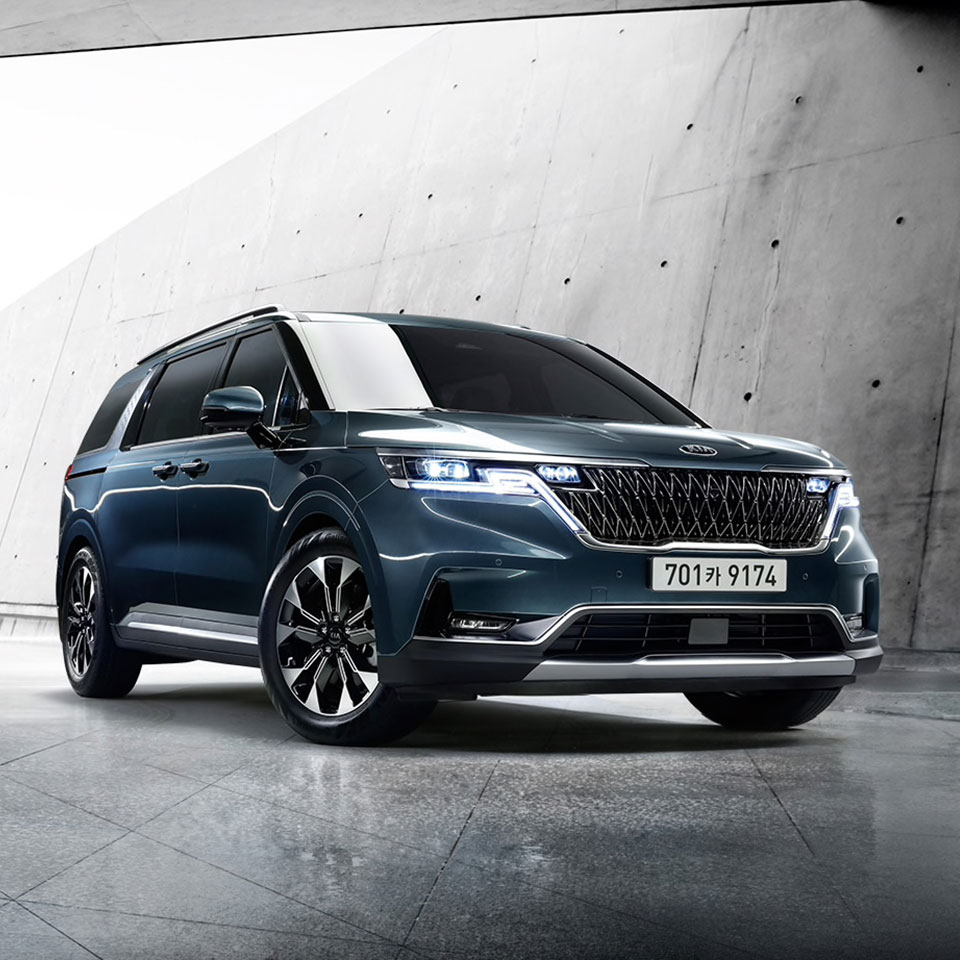


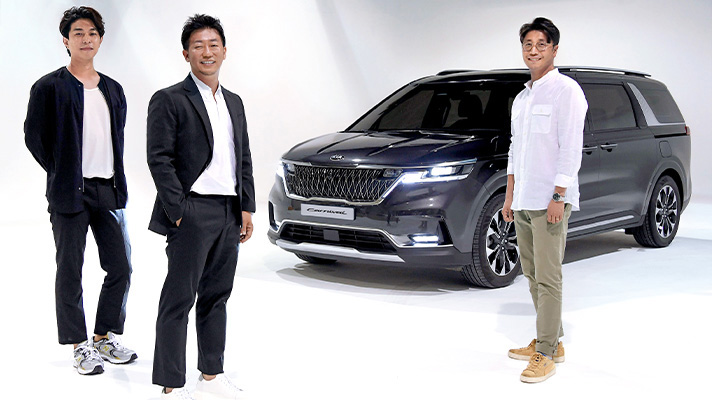
The Kia Carnival(Sedona) has entered its new generation with a bold, innovative design statement, underscoring luxury and comfort with its magnificent volume, uniquely molded exterior lines, and hotel lounge-like interior. With these changes, the 4th-generation Carnival becomes an easy standout among competitor models that have not been able to escape the standardized design demands of the segment.
This bold attempt reflects Kia Motors’ determination to make Carnival not just a minivan but a premium vehicle. We interviewed the designers of the model―Senior Research Engineers Park Jung-Yong and Jeon Doo-Sung and Research Engineer Yun Jae-Hoon―to hear the backstories of Carnival’s design innovations.
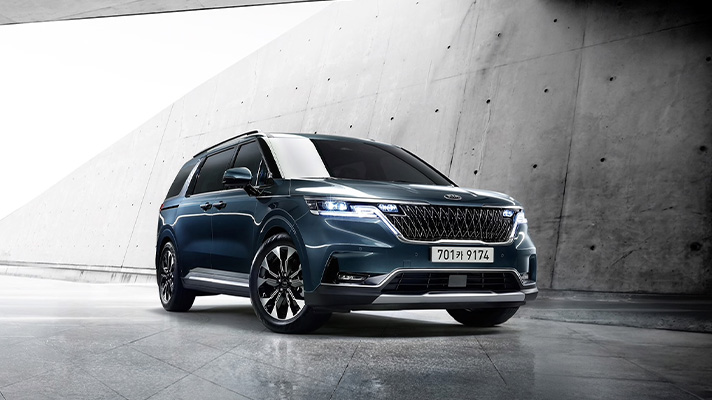
Q. What is the core design value permeating the 4th-gen Carnival?
It’s meant to be more than a minivan; it’s a lifestyle vehicle that can deliver on both ends of work and life. The Carnival serves fantastically as a family car or as a business VIP vehicle for entertainers and politicians―to meet these divergent demands, the Carnival’s core value became “a GUV (Grand Utility Vehicle) that enriches higher values of life.”
Q. In terms of exterior, which characteristic distinguishes the Carnival the most from its competitors?
The domestic Korean market and the North American market―two principal targets for the Carnival―have traditionally shown strong preferences for SUVs, so we decided to incorporate the SUV style into the Carnival’s exterior. Particularly, we gave much effort in bringing the SUV’s proportions to Carnival’s minivan identity. For example, Minivans typically have larger side surface areas than those of SUVs, which gives off that sluggish ‘van’ impression. We wanted to move away from that impression and create a more sporty image for the Carnival.
To that end, we shortened the front overhang and lengthened the wheelbase and the rear overhang, creating a more dynamic impression akin to that of an SUV. The lower edges of the car body received black finishes to contribute to the rugged image as well. We also peppered the vehicle with several design elements―the character line that starts from the headlamp and goes across the upper car body being one example―to divert the viewer’s attention to the upper half of the car―this has the effect of concealing the aforementioned sluggish impression that results from a tall vehicle.
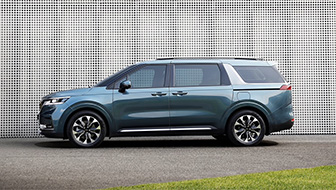
We gave most effort to the side body proportions. The 4th generation Carnival had its front overhang shortened and the wheelbase and the rear overhang lengthend.
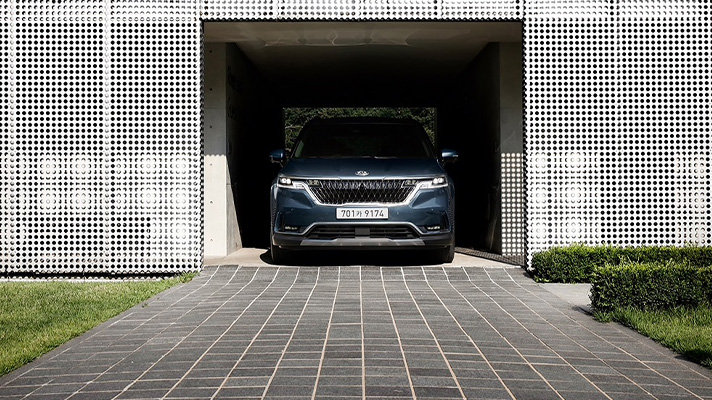
Q. The front design reminds one of an SUV design as well―how did you achieve this effect?
Being bold with the first impression was the key. We lifted the front top of the bonnet to give the rugged and grand feel of a large SUV and pushed back the A-pillar to emphasize the bonnet length; we likewise applied a simple, wide skid plate on the bottom edge of the bumper, which added to the model’s SUV-like impression.
Q. Why the exposed headlamp on a minivan?
The front mask is the biggest determinant of the consumers’ impression of the car, so needless to say it should look appealing. The headlamp and the radiator grille, of course, are huge design elements that make up that mask―and we wanted to try something new here to deliver an unprecedented image for the Carnival line. The fourth-gen Carnival’s headlamps omit the traditional lamp covers, with each of the daytime running lamps, high beams, low beams, and turn signals being separately exposed. The design has each headlamp module protruding voluminously, which contributes to the model’s futuristic impression. It is a bold design stroke that is very uncommon in a minivan.
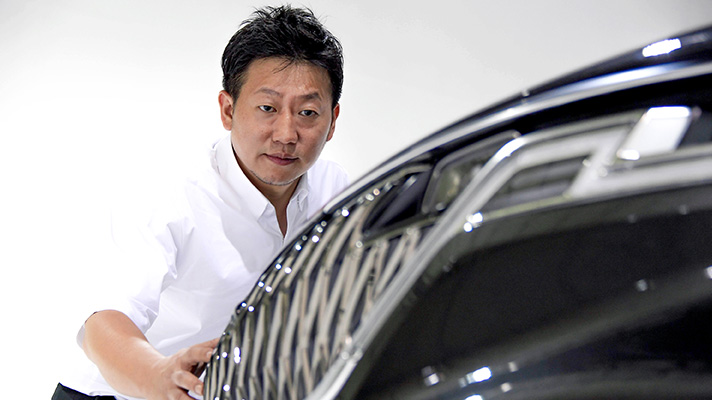
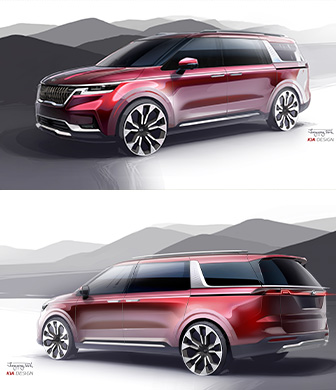
Q. The radiator grille looks quite ornate; what’s behind the design?
The radiator grille’s “Symphonic Architecture” represents an orchestra conductor at work. Crisscrossing geometric lines are drawn in harmonies of four colors of satin chrome, dark chrome, high-glossy black, and matte black, culminating in an absolutely elegant and luxurious look. In addition, the border between the headlamp and the radiator grille was overlapped into one line, creating the wide, extended character line that completes the front design.
Q. Is there any element left that pays respect to the original Carnival’s design heritage?
Of course, we would be remiss in not doing so for such a steady-selling model. The 4th-generation Carnival succeeds the design elements of the original in select parts. The “island roof”, which uses the rear kick-up beltline (the border between the window and the car body) and the DLO (Daylight opening; the graphic on the side windows) to create an illusion of a floating roof, is one such example. The bottom edge of the first- and second-row side windows were lowered to ensure uninhibited passenger views, while the third-row side windows were trimmed narrowly for a speedy, sporty look. The C-pillar, finally, received a garnish to give a strong, unique feel, serving as a design point on the side design that otherwise may have been a bit dull.
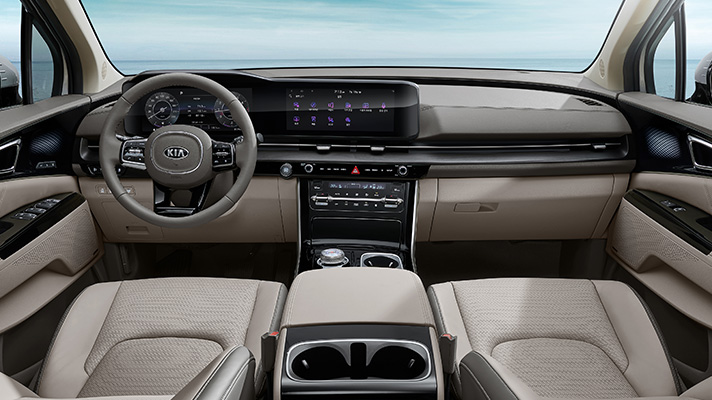
Q. How did you begin to conceive of Carnival’s interior design?
It began from an imagination of a perfect family trip―the word “Carnival” was after all resonant with words like trips, camping, and family. Then we wondered about taking a family trip to space on a spaceship, inspired by the renowned 1968 movie 2001 Space Odyssey. Despite being designed more than half a century ago, the minimalist spaceship interior still looks futuristic and elegant; how to conceive of a similarly enduring futuristic design for the Carnival became our shared challenge. When the passenger sits on the first row, does he feel like he is sitting in the cockpit of a high-tech spaceship? To that end, we made the panoramic display that integrates the cluster and the navigation and applied the touch-style control panel.
Q. The sporty feel of the exterior appears to continue in the interior as well.
To emphasize the cutting-edge feel, we designed the air vents such that they appear as a natural part of the crash pad (as so-called ‘hidden type’ vents). The long, horizontal chrome garnishes (which look like tail-pins) make the vents appear as more of a decorative element, especially because the garnishes are linked to the door molding on a continuum. This design emphasis on the horizontal stretch also has the effect of making the cabin look more spacious. In the end, that’s what came to define the interior design as a whole. The emphasis on volume and length inspired the choice of material that links the crash pad to the doors and even the shapes and the graphics on the small buttons in the dash.
But by far the most important and painstaking part of the interior design process was the panoramic display. We integrated the 12.3-inch cluster and the infotainment display to maximize the interior’s high-tech sensibilities. The display also received curved edges like those found on premium smartphones, a detail that adds to the effect.
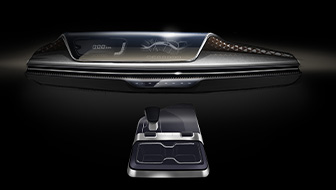
By for the most important and painstaking part of the interior design process was the panoramic display. We integrated the 12.3-inch cluster and the infotainment display to maximize the interior's high-tech sensibilities.
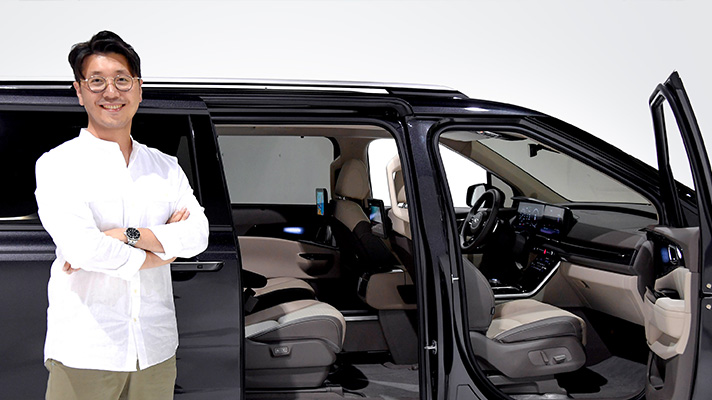
Q. The Carnival is used often for servicing VIPs―does the model’s interior design take consideration of this important function?
Indeed. We wanted the second- and third-row seats to feel like a hotel lounge. The interior layout was designed such that getting on and off the vehicle is easy and comfortable. The headroom and the legroom were expanded to ensure relaxing seating, and even the third row comes with side sunshades for privacy’s sake.
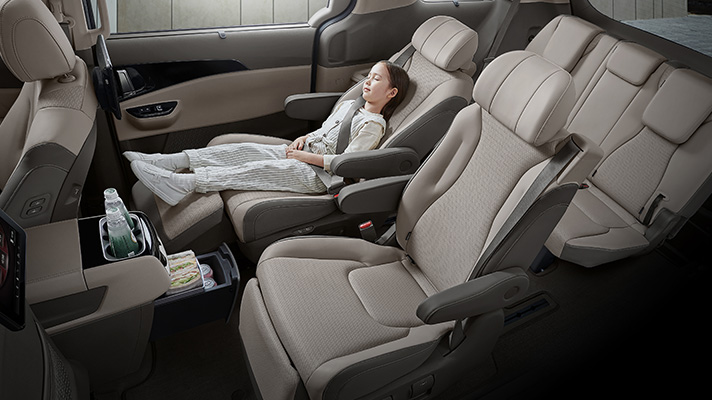
For the 7-seater model, you can select the second-row premium relaxation seating option―these seats feature electronic reclining that offers gorgeous comfort comparable to one found in first-class seats on airplanes. Regardless of the travel distance, they will provide the passenger with an absolutely relaxing ride. In between the two seats lies the expanded-capacity center console, which can serve as a storage compartment for simple items or even as a tray table. Moreover, the second and third rows feature 4 USB charging ports that alleviate the concerns of using electronic devices in long travels. All these features combine to provide the luxurious comfort that one would only expect in premium sedans.
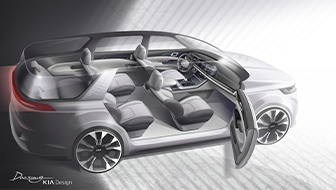
Q. With respect to interior design, what distinguishes the Carnival from the competitor models?
The Carnival is a minivan, but it doesn’t look like a minivan―that’s the biggest difference, I would say. Ordinary minivans typically focus on delivering functionality, so they go light on the subtle details. But the Carnival is all about those details. The second-row premium relaxation seats, luxurious floor console, and SBW (Shift-By-Wire) with ambient lights are some of the examples that are VIP-oriented. The design inspires this curious question: In terms of “very important,” who’s more “VIP” than family?
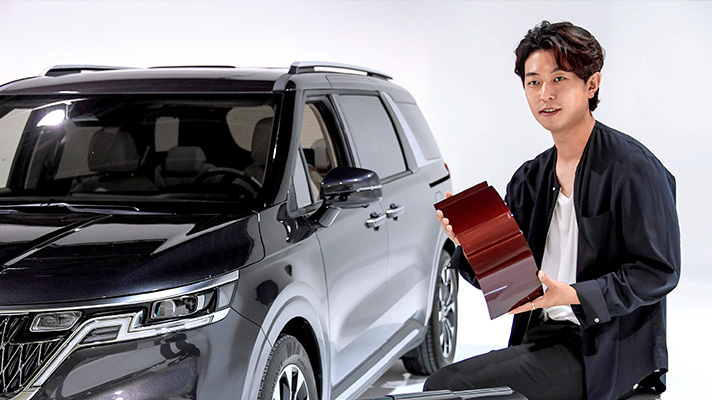
Q. What were some tasks you undertook to ensure the Carnival’s high-quality sensibility?
To ensure the premium lounge feel, we applied lots of soft, luxurious materials to the interior and complemented it with black high-glossy, wood garnish, as well as mood lamps―but let me be clear here that a certain material alone neither improves upon nor ensures that “high-quality sensibility.” Satisfaction from sensibility originates from the overall quality of the car. To that end, our team conducts CQM (Color Quality Management) studies to ensure that the colors and the finish inside and out are immaculate; via this protocol, we check every part’s gloss, coloring, and surface form and evaluate whether the high quality we expect in our cars is consistent throughout. Indeed, Carnival's “high-quality sensibility” on the user end starts from this process.
Q. May we hear a few words about the two new colors―red and blue―that were launched?
The Carnival is also useful as a vehicle for leisure; its futuristic feel and SUV-like stylings form an intriguing harmony for the modern drivers with divergent lifestyles. We felt it would be best if the new colors reflected this newfound identity of the model, fresh and bold, even with a touch of mysticism. And the resulting theme for the newly developed colors became “bringing ‘mania’ colors into the mainstream.” But we did not want to completely override the relaxing minivan identity either. The end result―Astra Blue and Flare Red―are design statements that simultaneously emphasize the driver’s personality and invite the passengers comfortably into the vehicle. It was an arduous process, one that involved many dilemmas, particularly the one about going chromatic or achromatic... but ultimately I think our objectives have been well-reflected in the end product.
Astra Blue puts a bit more focus on our development theme―bringing ‘mania’ to mainstream―while Flare Red was largely inspired by the spaceship image mentioned earlier by my interior designing colleague. The Carnival sets out on a space-bound mission, and as the spaceship launches, it flares up in flames―and there’s your Flare Red. I think that Astra Blue will approach our customer base as a more accessible yet audacious color, while the Flare Red’s high saturation and dazzling pearls will appeal to more flamboyant personalities.
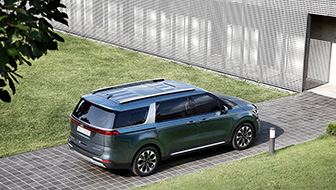
We wanted the colors to stand out, but at the same time to invite the users with comfortable accessibility.
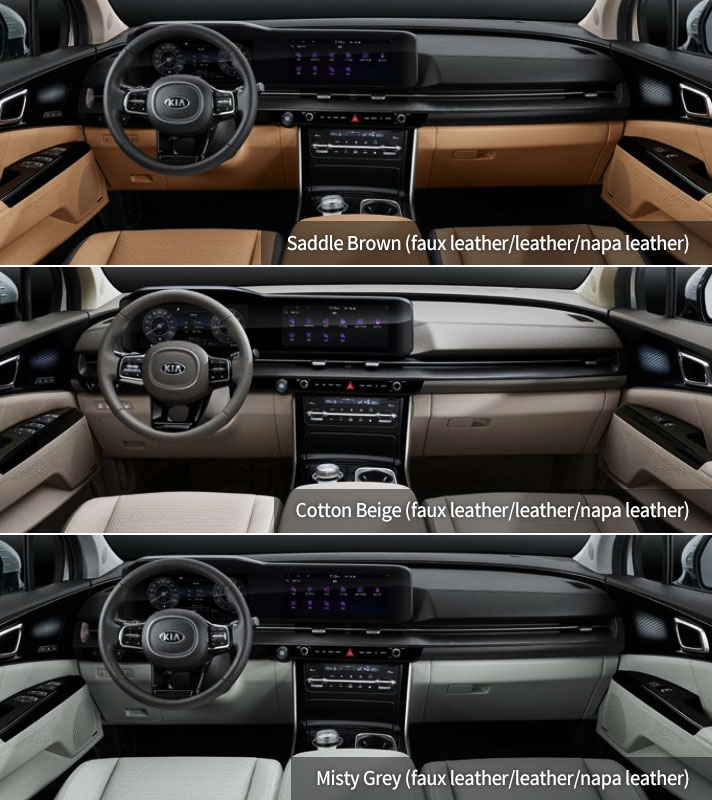
Q. How many choices exist for interior color?
The Carnival comes with three interior color options―Saddle Brown, Cotton Beige, and Misty Grey. Given the car’s identity, we were compelled to choose colors that emphasized interior spaciousness. The two-tone Saddle Brown is the domestic market’s favorite. The combination uses off-black color to complement the brown, and I really love them as natural complements of each other.
Q. If you purchase a Carnival yourself, what’s your choice of color scheme?
Astra Blue for the exterior, and Cotton Beige for the interior. It’s a combination that, in my opinion, is appreciably unique but also appreciably mainstream. Cotton Beige is a great color that reflects the luxurious premium lounge identity of the interior seating, and the two tones that comprise the theme, beige and taupe, are low-contrast colors that are easy on the eyes but high-saturation enough to emphasize the spaciousness of the interior. It’s a wonderful combination that delivers on both form and functionality, a balance point in between luxurious comfort and sporty futurism. They are a big part of the Carnival experience that I hope more drivers would try out.
*The content introduced in the article may vary depending on the specification of the car.
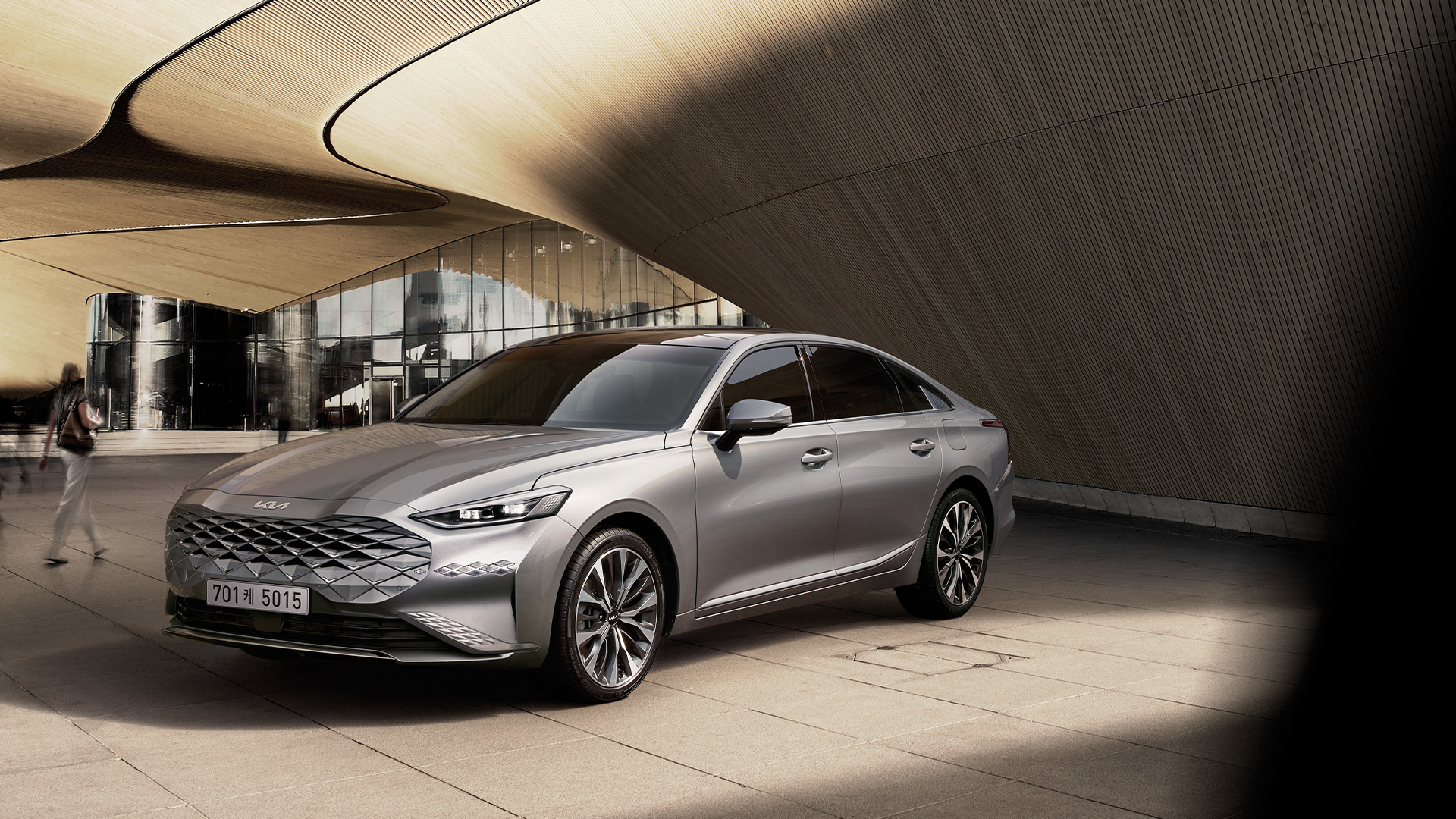
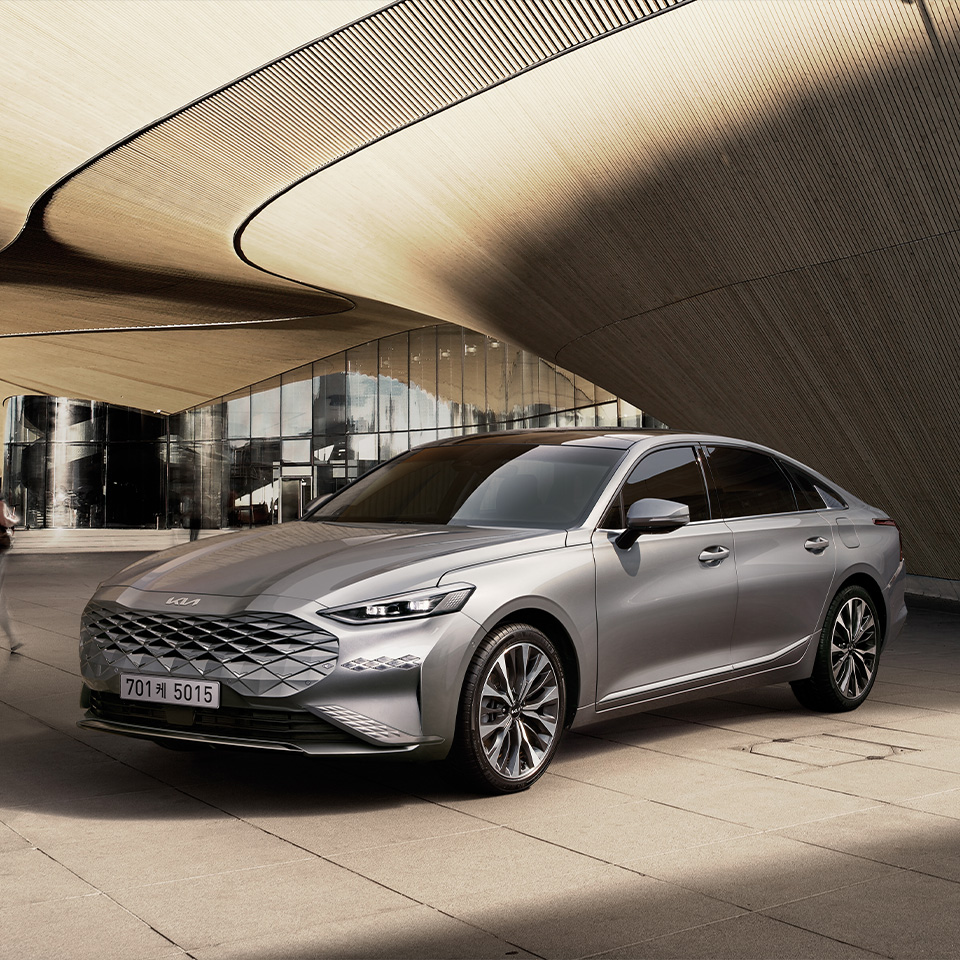
Contrast Becomes Creativity: Kia K8 Exterior
2021.05.04 10min read